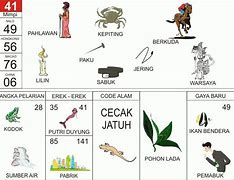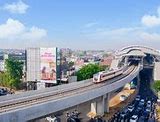
Late 19th and early 20th century
In 1886, the Statue of Liberty, a gift from France, was dedicated in New York Harbor. The statue welcomed 14 million immigrants as they came to the U.S. via Ellis Island by ship in the late 19th and early 20th centuries, and is a symbol of the United States and American ideals of liberty and peace.[109][110]
In 1898, the City of New York was formed with the consolidation of Brooklyn (until then a separate city), the County of New York (which then included parts of the Bronx), the County of Richmond, and the western portion of the County of Queens.[111] The opening of the New York City Subway in 1904, first built as separate private systems, helped bind the new city together.[112] Throughout the first half of the 20th century, the city became a world center for industry, commerce, and communication.[113]
In 1904, the steamship General Slocum caught fire in the East River, killing 1,021 people.[114] In 1911, the Triangle Shirtwaist Factory fire, the city's worst industrial disaster, killed 146 garment workers and spurred the growth of the International Ladies' Garment Workers' Union and major improvements in factory safety standards.[115]
New York's non-White population was 36,620 in 1890.[116] New York City was a prime destination in the early 20th century for Blacks during the Great Migration from the American South, and by 1916, New York City had the largest urban African diaspora in North America.[117] The Harlem Renaissance of literary and cultural life flourished during the era of Prohibition.[118] The larger economic boom generated construction of skyscrapers competing in height.[119]
New York City became the most populous urbanized area in the world in the early 1920s, overtaking London. The metropolitan area surpassed 10 million in the early 1930s, becoming the first megacity.[120] The Great Depression saw the election of reformer Fiorello La Guardia as mayor and the fall of Tammany Hall after eighty years of political dominance.[121]
Returning World War II veterans created a post-war economic boom and the development of large housing tracts in eastern Queens and Nassau County, with Wall Street leading America's place as the world's dominant economic power. The United Nations headquarters was completed in 1952, solidifying New York's global geopolitical influence, and the rise of abstract expressionism in the city precipitated New York's displacement of Paris as the center of the art world.[122]
Jadual Waktu Solat di New York City — Disember 2024
Aplikasi gaya hidup Islami yang komprehensif dengan waktu sholat paling akurat, memberdayakan dan menghubungkan umat Islam di seluruh dunia.
Most populous city in the United States
City in the United States
Interactive map outlining New York City
100xx–104xx, 11004–05, 111xx–114xx, 116xx
New York, often called New York City[b] or NYC, is the most populous city in the United States, located at the southern tip of New York State on one of the world's largest natural harbors. The city comprises five boroughs, each coextensive with a respective county. The city is the geographical and demographic center of both the Northeast megalopolis and the New York metropolitan area, the largest metropolitan area in the U.S. by both population and urban area. New York is a global center of finance[11] and commerce, culture, technology,[12] entertainment and media, academics and scientific output,[13] the arts and fashion, and, as home to the headquarters of the United Nations, international diplomacy.[14][15][16][17][18]
With an estimated population in 2023 of 8,258,035[5] distributed over 300.46 square miles (778.2 km2),[4] the city is the most densely populated major city in the United States. New York City has more than double the population of Los Angeles, the nation's second-most populous city.[19] With more than 20.1 million people in its metropolitan statistical area[20] and 23.5 million in its combined statistical area as of 2020, New York City is one of the world's most populous megacities.[21] The city and its metropolitan area are the premier gateway for legal immigration to the United States. As many as 800 languages are spoken in New York City,[22] making it the most linguistically diverse city in the world. In 2021, the city was home to nearly 3.1 million residents born outside the U.S.,[19] the largest foreign-born population of any city in the world.[23]
New York City traces its origins to Fort Amsterdam and a trading post founded on Manhattan Island by Dutch colonists around 1624. The settlement was named New Amsterdam in 1626 and was chartered as a city in 1653. The city came under English control in 1664 and was temporarily renamed New York after King Charles II granted the lands to his brother, the Duke of York,[24] before being permanently renamed New York in November 1674. New York City was the U.S. capital from 1785 until 1790.[25] The modern city was formed by the 1898 consolidation of its five boroughs: Manhattan, Brooklyn, Queens, the Bronx, and Staten Island.
Anchored by Wall Street in the Financial District, Manhattan, New York City has been called both the world's premier financial and fintech center[26][27] and the most economically powerful city in the world.[28] As of 2022[update], the New York metropolitan area is the largest metropolitan economy in the world, with a gross metropolitan product of over US$2.16 trillion.[9] The New York metropolitan area's economy is larger than all but nine countries in the world. Despite having a 24/7 rapid transit system, New York also leads the world in urban automobile traffic congestion.[29] The city is home to the world's two largest stock exchanges by market capitalization of their listed companies: the New York Stock Exchange and Nasdaq. New York City is an established safe haven for global investors.[30] As of 2023[update], New York City is the most expensive city in the world for expatriates[31] and has by a wide margin the highest U.S. city residential rents;[32] and Fifth Avenue is the most expensive shopping street in the world.[33] New York City is home by a significant margin to the highest number of billionaires,[34] individuals of ultra-high net worth (greater than US$30 million),[35] and millionaires of any city in the world.[36]
In 1664, New York was named in honor of the Duke of York (later King James II of England).[37] James's elder brother, King Charles II, appointed the Duke as proprietor of the former territory of New Netherland, including the city of New Amsterdam, when the Kingdom of England seized it from Dutch control.[38]
In the pre-Columbian era, the area of present-day New York City was inhabited by Algonquians, including the Lenape. Their homeland, known as Lenapehoking, included the present-day areas of Staten Island, Manhattan, the Bronx, the western portion of Long Island (including Brooklyn and Queens), and the Lower Hudson Valley.[39]
The first documented visit into New York Harbor by a European was in 1524 by explorer Giovanni da Verrazzano.[40] He claimed the area for France and named it Nouvelle Angoulême (New Angoulême).[41] A Spanish expedition, led by the Portuguese captain Estêvão Gomes sailing for Emperor Charles V, arrived in New York Harbor in January 1525 and charted the mouth of the Hudson River, which he named Río de San Antonio ('Saint Anthony's River').[42]
In 1609, the English explorer Henry Hudson rediscovered New York Harbor while searching for the Northwest Passage to the Orient for the Dutch East India Company.[43] He sailed up what the Dutch called North River (now the Hudson River), named first by Hudson as the Mauritius after Maurice, Prince of Orange.[44]
Hudson claimed the region for the Dutch East India Company. In 1614, the area between Cape Cod and Delaware Bay was claimed by the Netherlands and called Nieuw-Nederland ('New Netherland'). The first non–Native American inhabitant of what became New York City was Juan Rodriguez, a merchant from Santo Domingo who arrived in Manhattan during the winter of 1613–14, trapping for pelts and trading with the local population as a representative of the Dutch colonists.[45][46]
, centered in what eventually became Lower Manhattan, in 1664, the year
took control and renamed it New York
A permanent European presence near New York Harbor was established in 1624, making New York the 12th-oldest continuously occupied European-established settlement in the continental United States, with the founding of a Dutch fur trading settlement on Governors Island. In 1625, construction was started on a citadel and Fort Amsterdam, later called Nieuw Amsterdam (New Amsterdam), on present-day Manhattan Island.[47][48]
The colony of New Amsterdam extended from the southern tip of Manhattan to modern-day Wall Street, where a 12-foot (3.7 m) wooden stockade was built in 1653 to protect against Native American and English raids.[49] In 1626, the Dutch colonial Director-General Peter Minuit, as charged by the Dutch West India Company, purchased the island of Manhattan from the Canarsie, a small Lenape band,[50] for "the value of 60 guilders"[51] (about $900 in 2018).[52] A frequently told but disproved legend claims that Manhattan was purchased for $24 worth of glass beads.[53][54]
Following the purchase, New Amsterdam grew slowly.[24] To attract settlers, the Dutch instituted the patroon system in 1628, whereby wealthy Dutchmen (patroons, or patrons) who brought 50 colonists to New Netherland would be awarded land, local political autonomy, and rights to participate in the lucrative fur trade. This program had little success.[55]
Since 1621, the Dutch West India Company had operated as a monopoly in New Netherland, on authority granted by the Dutch States General. In 1639–1640, in an effort to bolster economic growth, the Dutch West India Company relinquished its monopoly over the fur trade, leading to growth in the production and trade of food, timber, tobacco, and slaves (particularly with the Dutch West Indies).[24][56]
In 1647, Peter Stuyvesant began his tenure as the last Director-General of New Netherland. During his tenure, the population of New Netherland grew from 2,000 to 8,000.[57][58] Stuyvesant has been credited with improving law and order; however, he earned a reputation as a despotic leader. He instituted regulations on liquor sales, attempted to assert control over the Dutch Reformed Church, and blocked other religious groups from establishing houses of worship.[59]
and New York with British warships,
In 1664, unable to summon any significant resistance, Stuyvesant surrendered New Amsterdam to English troops, led by Colonel Richard Nicolls, without bloodshed.[59][60] The terms of the surrender permitted Dutch residents to remain in the colony and allowed for religious freedom.[61]
In 1667, during negotiations leading to the Treaty of Breda after the Second Anglo-Dutch War, the victorious Dutch decided to keep the nascent plantation colony of what is now Suriname, which they had gained from the English,[62] and in return the English kept New Amsterdam. The settlement was promptly renamed "New York" after the Duke of York (the future King James II and VII).[63] The duke gave part of the colony to proprietors George Carteret and John Berkeley.[64]
On August 24, 1673, during the Third Anglo-Dutch War, Anthony Colve of the Dutch navy seized New York at the behest of Cornelis Evertsen the Youngest and rechristened it "New Orange" after William III, the Prince of Orange.[65] The Dutch soon returned the island to England under the Treaty of Westminster of November 1674.[66][67]
Several intertribal wars among the Native Americans and epidemics brought on by contact with the Europeans caused sizeable population losses for the Lenape between 1660 and 1670.[68] By 1700, the Lenape population had diminished to 200.[69] New York experienced several yellow fever epidemics in the 18th century, losing ten percent of its population in 1702 alone.[70][71]
In the early 18th century, New York grew in importance as a trading port while as a part of the colony of New York. It became a center of slavery, with 42% of households enslaving Africans by 1730.[73] Most were domestic slaves; others were hired out as labor. Slavery became integrally tied to New York's economy through the labor of slaves throughout the port, and the banking and shipping industries trading with the American South. During construction in Foley Square in the 1990s, the African Burying Ground was discovered; the cemetery included 10,000 to 20,000 graves of colonial-era Africans, some enslaved and some free.[74]
The 1735 trial and acquittal in Manhattan of John Peter Zenger, who had been accused of seditious libel after criticizing colonial governor William Cosby, helped to establish freedom of the press in North America.[75] In 1754, Columbia University was founded.[76]
The Stamp Act Congress met in New York in October 1765, as the Sons of Liberty organization emerged in the city and skirmished over the next ten years with British troops stationed there.[77] The Battle of Long Island, the largest battle of the American Revolutionary War, was fought in August 1776 within modern-day Brooklyn.[78] A British rout of the Continental Army at the Battle of Fort Washington in November 1776 eliminated the last American stronghold in Manhattan, causing George Washington and his forces to retreat across the Hudson River to New Jersey, pursued by British forces.[79][80]
After the battle, in which the Americans were defeated, the British made the city their military and political base of operations in North America.[81] The city was a haven for Loyalist refugees and escaped slaves who joined the British lines for freedom promised by the Crown, with as many as 10,000 escaped slaves crowded into the city during the British occupation, the largest such community on the continent.[82][83] When the British forces evacuated New York at the close of the war in 1783, they transported thousands of freedmen for resettlement in Nova Scotia, England, and the Caribbean.[84]
The attempt at a peaceful solution to the war took place at the Conference House on Staten Island between American delegates, including Benjamin Franklin, and British general Lord Howe on September 11, 1776.[85] Shortly after the British occupation began, the Great Fire of New York destroyed nearly 500 buildings, about a quarter of the structures in the city, including Trinity Church.[86][87]
International relations
In 2006, the sister city program[606] was restructured and renamed New York City Global Partners. New York's historic sister cities are denoted below by the year they joined New York City's partnership network.[607]
Core cities are metropolitan core cities of at least a million people. The other areas are urban areas of cities that have an urban area of 150,000+ or of a metropolitan area of at least 250,000+. Satellite cities are in italics.
Waktu shalat di kota United States lainnya
Time Genie menghormati privasi Anda.
Jadual Waktu Solat New York
Waktu Solat . Solat Jumaat . Ramadhan . Berbuka Puasa
Jadual Waktu Solat New York Waktu solat adalah peruntukan tempoh atau selang masa tertentu bagi masyarakat muslim menjalani syariat solat sama ada fardhu ataupun sunat. Penyusunan waktu solat fardhu telah diajarkan sendiri oleh Malaikat Jibrail kepada Nabi Muhammad s.a.w. Waktu solat adalah piawai bagi masyarakat muslim seluruh dunia. Terutama bagi solat fardhu, waktunya ditetapkan mengikut peredaran matahari dan bukan mengikut selang masa yang tetap. Hal ini disebabkan oleh faktor geografi, bentuk bumi, kecondongan paksi bumi dan peredaran bumi dalam orbitnya yang berbentuk elips. Kerana itu waktu solat boleh berubah mengikut pertukaran musim disebabkan perbezaan kadar siang dan malam.
Berbuka Puasa: Johor Bahru | Ipoh | Klang | K.Kinabalu | Kuching | Petaling | Seremban | K.Bharu
Join the largest Islamic Community in NYC
Athan app helps you connect with your local Muslims so you can ask questions and share anything with them. Currently in NYC only.
Jadwal Sholat Tahunan untuk New York
Jadwal sholat PDF dan Excel setahun penuh untuk "waktu sholat New York 2024" tersedia pada tautan berikut ini. Perlu diingat bahwa, jadwal waktu sholat antara tahun satu dengan tahun masehi lainnya tidak mengalami perubahan yg berarti. Namun demikian, kami menyediakan juga jadwal sholat tahun depan jika diperlukan.
Jadwal sholat tahun: 2024 | 2025 .
Semoga layanan ini bermanfaat. 🙂
New York City is a city in United States.
The name of the time zone is America/New_York.
Waktu Sholat di: New York - Hari Ini 15-12-2024
Waktu Sholat Hari Ini: Minggu, 15 Desember 2024. Kota: New York, Amerika Serikat
Waktu sholat dihitung menggunakan kriteria: Islamic Society of North America (ISNA), USA.
Arah kiblat kota New York, Amerika Serikat adalah 58° dari utara geografis (searah jarum jam). Pada jam 16:22 (waktu lokal), arah bayangan benda yg tegak akan menunjuk arah kiblat.
Waktu Solat di New York City
Waktu Solat Seterusnya «Subuh» — 00:32:09
Government and politics
New York City is a metropolitan municipality with a strong mayor–council form of government.[592] The city government is responsible for public education, correctional institutions, public safety, recreational facilities, sanitation, water supply, and welfare services.
The City Council is a unicameral body of 51 council members whose districts are defined by geographic population boundaries.[593] Each term for the mayor and council members lasts four years and has a two consecutive-term limit,[594] which is reset after a four-year break. The New York City Administrative Code, the New York City Rules, and The City Record are the code of local laws, compilation of regulations, and official journal, respectively.[595][596]
Each borough is coextensive with a judicial district of the state Unified Court System, of which the Criminal Court and the Civil Court are the local courts, while the New York Supreme Court conducts major trials and appeals. Manhattan hosts the First Department of the Supreme Court, Appellate Division, while Brooklyn hosts the Second Department. There are several extrajudicial administrative courts, which are executive agencies and not part of the state Unified Court System.
New York City is divided between, and is host to the main branches of, two different U.S. district courts: the District Court for the Southern District of New York, whose main courthouse is on Foley Square in Manhattan and whose jurisdiction includes Manhattan and the Bronx;[597] and the District Court for the Eastern District of New York, whose main courthouse is in Brooklyn and whose jurisdiction includes Brooklyn, Queens, and Staten Island.[598] The U.S. Court of Appeals for the Second Circuit and U.S. Court of International Trade are based in New York, also on Foley Square in Manhattan.[599][600]
The city's mayor is Eric Adams, who was elected in 2021.[601] The Democratic Party holds the majority of public offices. As of November 2023, 67% of active registered voters in the city are Democrats and 10.2% are Republicans.[602] New York City has not been carried by a Republican presidential candidate since 1924, and no Republican candidate for statewide office has won all five boroughs since the city was incorporated in 1898. In redistricting following the 2020 census, 14 of New York's 26 congressional districts include portions of New York City.[603]
New York City is a significant geographical source of political fundraising.[604] The city has a strong imbalance of payments with the national and state governments. It receives 83 cents in services for every $1 it sends to the federal government in taxes (or annually sends $11.4 billion more than it receives back). City residents and businesses also sent an additional $4.1 billion in the 2009–2010 fiscal year to the state of New York than the city received in return.[605]
Post-revolutionary period and early 19th century
In January 1785, the assembly of the Congress of the Confederation made New York City the national capital.[88] New York was the last capital of the U.S. under the Articles of Confederation and the first capital under the Constitution of the United States.[89] As the U.S. capital, New York City hosted the inauguration of the first President, George Washington, and the first Congress, at Federal Hall on Wall Street. Congress drafted the Bill of Rights there.[89] The Supreme Court held its first organizational sessions in New York in 1790.
In 1790, for the first time, New York City surpassed Philadelphia as the nation's largest city. At the end of 1790, the national capital was moved to Philadelphia.[90][91]
During the 19th century, New York City's population grew from 60,000 to 3.43 million.[92] Under New York State's gradual emancipation act of 1799, children of slave mothers were to be eventually liberated but to be held in indentured servitude until their mid-to-late twenties.[93][94] Together with slaves freed by their masters after the Revolutionary War and escaped slaves, a significant free-Black population gradually developed in Manhattan. The New York Manumission Society worked for abolition and established the African Free School to educate Black children.[95] It was not until 1827 that slavery was completely abolished in the state.[96] Free Blacks struggled with discrimination and interracial abolitionist activism continued. New York City's population jumped from 123,706 in 1820 (10,886 of whom were Black and of which 518 were enslaved) to 312,710 by 1840 (16,358 of whom were Black).[97]
Also in the 19th century, the city was transformed by both commercial and residential development relating to its status as a national and international trading center, as well as by European immigration, respectively.[99] The city adopted the Commissioners' Plan of 1811, which expanded the city street grid to encompass almost all of Manhattan. The 1825 completion of the Erie Canal through central New York connected the Atlantic port to the agricultural markets and commodities of the North American interior via the Hudson River and the Great Lakes.[100] Local politics became dominated by Tammany Hall, a political machine supported by Irish and German immigrants.[101] In 1831, New York University was founded.[102]
Several prominent American literary figures lived in New York during the 1830s and 1840s, including William Cullen Bryant, Washington Irving, Herman Melville, Rufus Wilmot Griswold, John Keese, Nathaniel Parker Willis, and Edgar Allan Poe. Members of the business elite lobbied for the establishment of Central Park, which in 1857 became the first landscaped park in an American city.[103]
The Great Irish Famine brought a large influx of Irish immigrants, of whom more than 200,000 were living in New York by 1860, representing over a quarter of the city's population.[104] Extensive immigration from the German provinces meant that Germans comprised another 25% of New York's population by 1860.[105][106]
Democratic Party candidates were consistently elected to local office, increasing the city's ties to the South and its dominant party. In 1861, Mayor Fernando Wood called on the aldermen to declare independence from Albany and the United States after the South seceded, but his proposal was not acted on.[95] Anger at new military conscription laws during the American Civil War (1861–1865), which spared wealthier men who could afford to hire a substitute, led to the Draft Riots of 1863, whose most visible participants were ethnic Irish working class.[95]
The draft riots deteriorated into attacks on New York's elite, followed by attacks on Black New Yorkers after fierce competition for a decade between Irish immigrants and Black people for work. Rioters burned the Colored Orphan Asylum to the ground.[105] At least 120 people were killed.[107] Eleven Black men were lynched over five days, and the riots forced hundreds of Blacks to flee. The Black population in Manhattan fell below 10,000 by 1865. The White working class had established dominance.[105][107] It was one of the worst incidents of civil unrest in American history.[108]
Experience Resorts World New York City
Resorts World New York City is the only casino in NYC, offering guests an unparalleled gaming and entertainment experience. With over 6,500 of the most popular Slot Machines and Electronic Table Games, you’re sure to find your favorite.
Experience fine dining at RW Prime, open 7-days a week. Bring your friends to explore the East-Meets-West menus with flavor packed dishes and handcrafted cocktails.
Book your hotel reservations at the Hyatt Regency JFK Airport at Resorts World New York City, to make us your favorite place to dine, play and stay!























